
During the American Civil War, the common term used in the United States was "sharpshooter", which is a reference to and a tribute to the Sharps rifles that were commonly used by Civil War "snipers", but the term "sharpshooter" does not originate with users of the Sharp's Rifle.
 Another common term used in the United States during the American Civil War was "skirmisher". Throughout history armies have used skirmishers to break up enemy formations and to thwart the enemy from flanking the main body of their attack force. They were deployed individually on the extremes of the moving army primarily to scout for the possibility of an enemy ambush. Consequently, a "skirmish" denotes a clash of small scope between these forces.
Another common term used in the United States during the American Civil War was "skirmisher". Throughout history armies have used skirmishers to break up enemy formations and to thwart the enemy from flanking the main body of their attack force. They were deployed individually on the extremes of the moving army primarily to scout for the possibility of an enemy ambush. Consequently, a "skirmish" denotes a clash of small scope between these forces.
In general, a skirmish was a limited combat, involving troops other than those of the main body. The term "sniper" was not in widespread use in the United States until after the American Civil War.
Pity Gen. John Sedgwick. He was killed at the
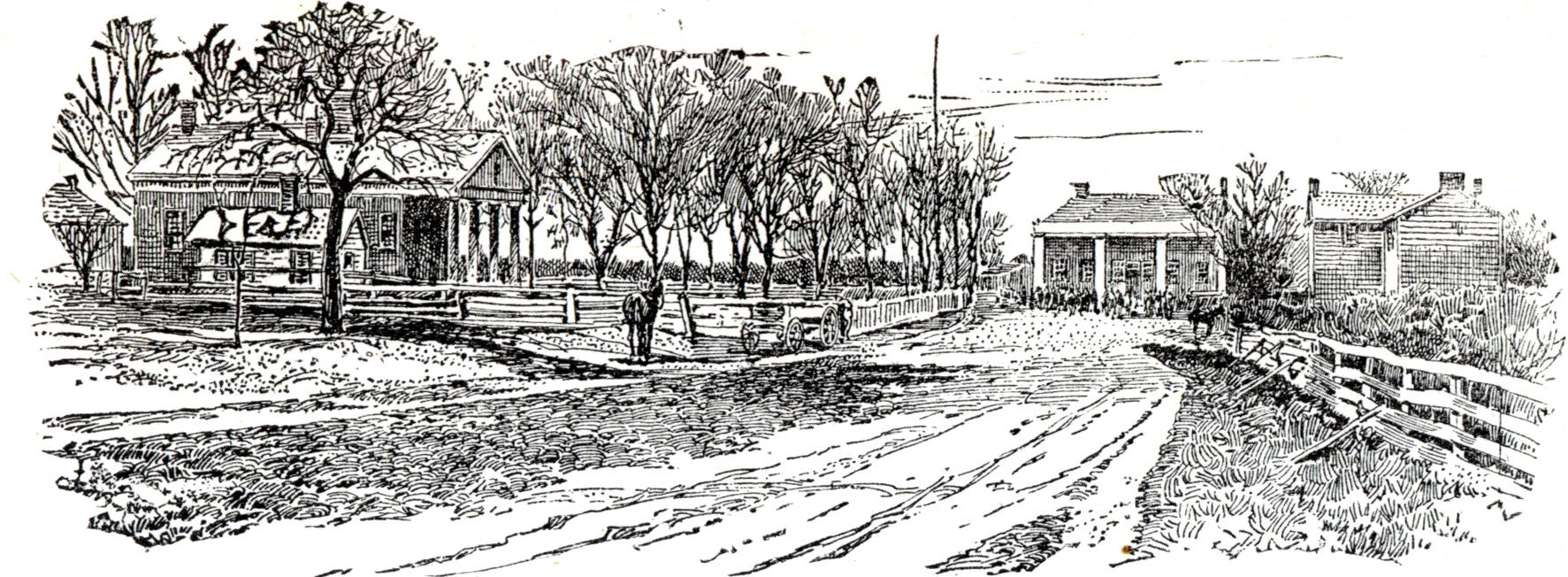 Battle of Spotsylvania Court House in May 1864 by a sniper 800 yards away. While he was placing field guns behind his front line, Sedgwick waved toward the distant Rebel sharpshooters and laughingly enjoined his gunners to ignore their sporadic shots: “What are you dodging for? They couldn’t hit an elephant at this distance!” Seconds later, a bullet smashed into Sedgwick’s face, killing him instantly.
Battle of Spotsylvania Court House in May 1864 by a sniper 800 yards away. While he was placing field guns behind his front line, Sedgwick waved toward the distant Rebel sharpshooters and laughingly enjoined his gunners to ignore their sporadic shots: “What are you dodging for? They couldn’t hit an elephant at this distance!” Seconds later, a bullet smashed into Sedgwick’s face, killing him instantly.
Although Prussian guard troops had fired a few rifle shots in the European revolutions of 1848, British light infantry had been the first to use rifles to devastating effect: against
 Russian musketeers in the Crimean War, which was fought from 1854 to 1856 on Russia’s Black Sea coast. Thereafter, all armies had re-equipped with rifles, which were essentially muskets with grooved barrels that would “take” the soft lead of a bullet and fling it in a tight, spiraling shot at a distant target. Whereas musket rounds rolled and hopped like knuckle balls, rifle rounds screamed in like fastballs—straight down the pipe.
Russian musketeers in the Crimean War, which was fought from 1854 to 1856 on Russia’s Black Sea coast. Thereafter, all armies had re-equipped with rifles, which were essentially muskets with grooved barrels that would “take” the soft lead of a bullet and fling it in a tight, spiraling shot at a distant target. Whereas musket rounds rolled and hopped like knuckle balls, rifle rounds screamed in like fastballs—straight down the pipe.
Or nearly straight. Even the best rifles developed in the 1850s and 1860s did not entirely solve the problem of trajectory. The standard .52-, .54-, or .58-caliber mid-19th-century rifle round was a heavy lump of lead, a veritable cannonball of a bullet. To fire it accurately downrange, infantry had to elevate their rifles so that the heavy, sinking ball would fly out far enough before toppling into an onrushing, distant adversary. Misjudge your distance from the enemy by as little as 30 yards—easily done at 300 yards—and your bullet would whistle harmlessly over his head. No wonder that Union infantry had required on average 900 pounds of lead and 240 pounds of black powder to kill a single Confederate in the Civil War, or that only one out of every 250 Prussian bullets fired in the Austro-Prussian War of 1866 actually struck an Austrian.
Statistics like these suggest the difficulty of sniping in the Civil War. “Sharpshooting” was a job for marksmen. Getting into the New Hampshire Sharpshooters,
 one of dozens of Union light infantry outfits, required feats of accuracy: at 600 feet, 10 consecutive shots at an average of five inches from the bull’s-eye. Col. Hiram Berdan, who was ordered by Gen. Winfield Scott to create two entire sharpshooter regiments from companies raised in the various states of the Union, was himself a famous crack shot—the best in the Union army.
one of dozens of Union light infantry outfits, required feats of accuracy: at 600 feet, 10 consecutive shots at an average of five inches from the bull’s-eye. Col. Hiram Berdan, who was ordered by Gen. Winfield Scott to create two entire sharpshooter regiments from companies raised in the various states of the Union, was himself a famous crack shot—the best in the Union army.Winning army target-shooting contests every year between the Mexican War and the Civil War, Berdan used his celebrity to recruit. During tryouts for the Sharpshooters in 1861-62—regularly attended by President Abraham Lincoln and his Cabinet—Berdan would fire at life-size drawings of Confederate
 President Jefferson Davis from 200 yards and score repeated head shots. One story had him asking a spectator, “Where shall I place the next one?” “In the right eye,” came the answer, and the next shot tore away the right eye.
President Jefferson Davis from 200 yards and score repeated head shots. One story had him asking a spectator, “Where shall I place the next one?” “In the right eye,” came the answer, and the next shot tore away the right eye.Finely made or customized rifles generally were required to make such shots. A favorite Confederate sniper rifle—procured in small quantities from blockade runners—was the .45-caliber British Whitworth.
 When it was fitted with a telescopic sight, the Whitworth had what was grimly called “killing accuracy” of 1,500 yards. The Whitworth barrel was drilled in a hexagonal pattern and fired a bullet shaped like a threaded nut. Gen. William Haines Lytle,
When it was fitted with a telescopic sight, the Whitworth had what was grimly called “killing accuracy” of 1,500 yards. The Whitworth barrel was drilled in a hexagonal pattern and fired a bullet shaped like a threaded nut. Gen. William Haines Lytle, the Ohio-born Union soldier-poet, was shot off his horse and killed by a Whitworth-armed Confederate sharpshooter at the Battle of Chickamauga
the Ohio-born Union soldier-poet, was shot off his horse and killed by a Whitworth-armed Confederate sharpshooter at the Battle of Chickamauga 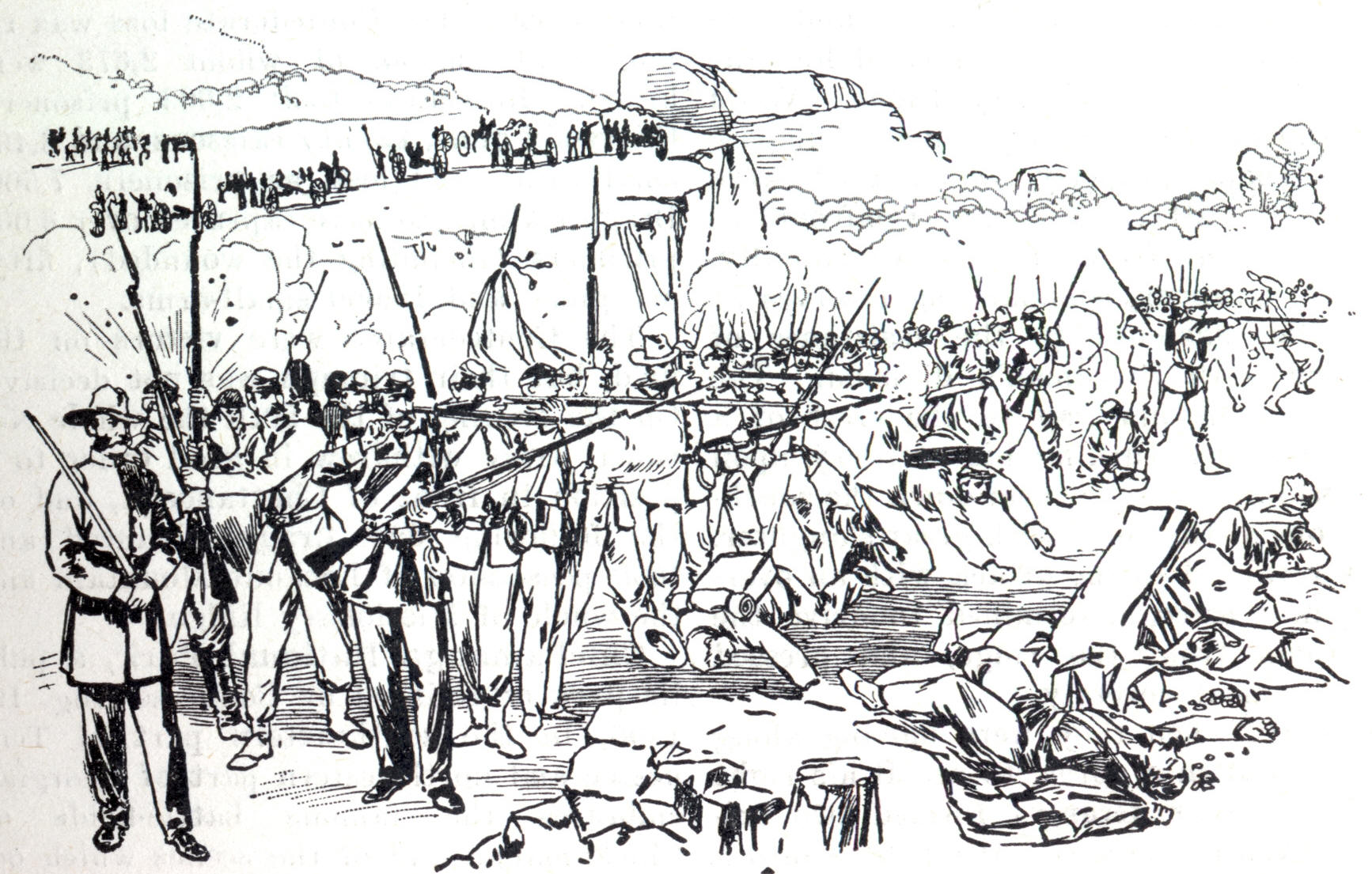 in September 1863. (Lytle had 10 months earlier written his last poem—“Lines on My Thirty-Sixth Birthday”—which, true to its Byronic title, predicted his imminent death in battle.)
in September 1863. (Lytle had 10 months earlier written his last poem—“Lines on My Thirty-Sixth Birthday”—which, true to its Byronic title, predicted his imminent death in battle.)The Manchester-made Whitworth and its nut-shaped bullet also killed Gen. “Uncle John” Sedgwick at Spotsylvania Court House. The sniper was probably Ben Powell, a Rebel crack shot who, like today’s snipers, was conceded virtual independence by his officers. His only job was to rove along the Union lines looking for a clean shot. Berry Benson, another Confederate sharpshooter, recalled meeting Powell in the Wilderness (site of the May 1864 battle that resulted in nearly 30,000 total casualties) and examining his Whitworth, which was so powerful that it could serve as a sort of howitzer when no direct fire targets offered themselves.
“Having nothing to do, I went down across a field where Ben Powell, with his Whitworth rifle, was sharpshooting,” Benson recalled in his memoir, Confederate Scout Sniper. “There had been a number of Whitworth rifles (with telescope sight) brought from England, running the blockade. These guns with ammunition had been distributed to the army, our brigade receiving one. It was given to Powell, as he was known to be an excellent shot. In campaigns, he posted himself wherever he pleased, for the purpose of picking off the enemy’s men. I shot the gun a few times. It kicked powerfully. . . . Once at Petersburg
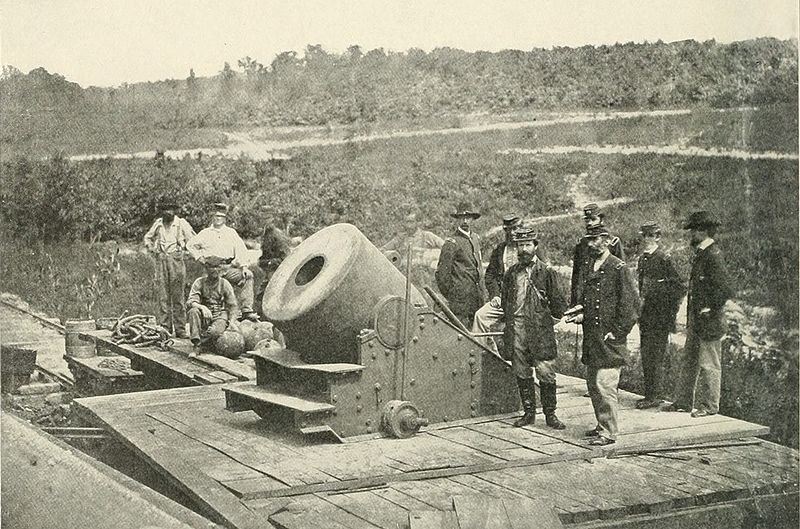 Powell gave [Blackwood] the gun to shoot, and as there was nobody particular in sight to shoot at, he held it up at a high angle and fired it over into the besiegers’ camp. Not long after, in a Northern paper, he read an account of two men being shot at a well, struck by the same ball, which had come so far that the report of the gun was not heard. And the day given was the same day Blackwood fired the Whitworth.”
Powell gave [Blackwood] the gun to shoot, and as there was nobody particular in sight to shoot at, he held it up at a high angle and fired it over into the besiegers’ camp. Not long after, in a Northern paper, he read an account of two men being shot at a well, struck by the same ball, which had come so far that the report of the gun was not heard. And the day given was the same day Blackwood fired the Whitworth.”Weapons of choice
The sniper’s weapon of choice was the so-called American rifle. Individually crafted and sold to hunters and target shooters before the war, “American,” “benchrest,” or “match” rifles were so heavy—14 to 40 pounds, two to four times the weight of a factory-made infantry rifle—that they had to be aimed and fired with the barrel resting on a bench, fence, or other support. The accuracy of these aptly named “heavies”—like the 35-pound, .46-caliber Morgan rifle made in small batches by John C. Wells of Milwaukee—derived from the massive barrel and superior engineering.
To get the most from their rifling, benchrest bores were much tighter than standard rifles, which necessitated special accouterments. Merely to load a bullet down the long barrel, the sniper had to fit the benchrest rifle with a “false muzzle” and a “bullet starter.” The false muzzle was essentially a funnel placed in the barrel of the rifle to hold the wide bullet in place on the lip of the narrow gun barrel. The bullet starter was a stubby, piston-driven ramrod that fit inside the false muzzle and allowed the sniper to jam the bullet down the rifle barrel and seat it in the breech without gouging the finely wrought true muzzle.
Still, with just one really first-class sniper rifle per brigade—usually left in the supply wagons to be brought forward when opportunities arose—most sharpshooters made do with the best rifle they could procure officially or scrounge unofficially. As always, the rich, industrialized Union with its flourishing arms industry got the best stuff. After personally intervening in Washington with the army staff and the secretary of war, Berdan procured a special rifle for his two Sharpshooter regiments: the Model 1859 .52-caliber Sharps—nicknamed the “Berdan”—which, in skilled hands, became one of the deadliest weapons of the war. Though not as well engineered as a match rifle or the Whitworth, the Berdan Sharps was a breech-loader capable of firing four times more quickly than muzzle-loaders like the Whitworth, and it was accurate out to 700 yards in skilled hands.
But Berdan never relied on technology alone. “To be effective sharpshooters the men have to be as skilled in field craft as they are in marksmanship,” he wrote in 1861. “They must be self-assured yet highly disciplined and above all they must be dedicated.” This directive got to the heart of sniping. As terrifying as it was for the victims, it was hard on the practitioners as well—physically and psychologically. Berry Benson, a Rebel sharpshooter, surveyed his own results along the “Bloody Angle” at Spotsylvania and noted his disgust: “This horrid confusion, these wet, muddy graves—this reeking mass of corruption, of rotting corpses. . . .How a man can look upon such a scene and still take pleasure in war seems past belief.”
Freelance snipers
Neither army trained snipers in the professional, dedicated way that they are developed today. Rather, they used sharpshooter units to scout and harass the enemy. Some individuals, like the Confederacy’s Ben Powell or the famously shaggy Union sniper Truman “California Joe” Head, would stand out as particularly good shots and gradually slip the bonds of military discipline, working more and more as freelance snipers, less and less as uniformed sharpshooters. California Joe—a favorite of Berdan and the Northern press—was celebrated for the number and difficulty of his “kills” with the Sharps rifle, one of them at 1,500 yards.
It would generally be more accurate to call Civil War snipers light infantry, what the Europeans called skirmishers: American equivalents of the Prussian fusilier, the Austrian jäger, or the French chasseur. Although Hiram Berdan organized the two green-jacketed Union sharpshooter regiments, they were trained by Caspar Trepp, a Swiss infantry officer who had fought with Garibaldi in Italy and with the British in the Crimea. Like European light infantry, American sharpshooters were trained to fight in open order—with wide intervals between the men—use cover, and advance and retreat on bugle and drum signals.
As in Europe, big Civil War battles drew whole sharpshooter units into action. Pitzer’s Wood and the Devil’s Den at Gettysburg—a low ridge crowned with broken stone masses—were fought over by companies of Confederate and Union sharpshooters in July 1863. One of the most famous Civil War photographs—Alexander Gardener’s Death of a Rebel Sniper—shows a dead Confederate sharpshooter in a carefully constructed sniper’s nest in the Devil’s Den.
Firing at long range—more than 500 yards across Plum Run to the Round Tops—Confederate marksmen piled up Union casualties at Gettysburg before they themselves were rooted out by Union sharpshooters and artillery fire. One of the dead Rebel snipers was discovered with a Leonard target rifle in his hands. A 36-pound match rifle made in New Hampshire, the Leonard had hairsplitting accuracy up to 1,000 yards. “From a distance of nearly half a mile, the Rebel sharpshooters drew a bead on us with a precision that deserved the highest commendation of their officers, but that made us curse the day they were born,” a Union veteran recalled bitterly. On Little Round Top, anxious Union officers scanned the Devil’s Den with field glasses to locate the muzzle flashes and smoke puffs from the Confederate rifles. When a sniper was detected, a percussion shell would be fired into his lair. Several Confederate sharpshooters were killed in this way. Gardener photographed one of them; the corpse—killed by concussion—was unscathed, and its trigger finger was crooked to fire.
Piling up casualties
This vulnerability in fixed positions—invisible, smokeless powder would not be introduced until the 1890s—explained the Civil War sniper’s preference for trees, which concealed the muzzle flash better, waved away the charcoal smoke, and offered a less obvious target to frustrated gunners. One of Winslow Homer’s best-known Civil War illustrations was The Sharpshooter, published in Harper’s Weekly in 1862. It depicts a Yankee sniper in a tree near Yorktown during the Peninsula Campaign. The sniper, one of Berdan’s Sharpshooters, is sitting on a tree branch and squinting through the sights of a James target rifle. The .45-caliber, muzzle-loading James, with its four-power telescopic sight, was a relatively light sniper rifle—just 14 pounds—yet in Homer’s drawing the shooter is bracing the rifle on a branch to improve his aim. Two companies of Berdan’s Sharpshooters used the James target rifle to pick off Confederate defenders during the siege of Yorktown in the spring of 1862.
Winslow Homer was appalled by the impressions he gathered during his sittings with the sharpshooter. At one point, he peered through the telescopic sight at an unsuspecting enemy. In a letter to a friend, Homer crudely sketched what he had seen: a Confederate officer striding through tall grass, the sniper’s crosshairs on his chest. “The above impression,” he wrote, “struck me as being as near murder as anything I could think of in connection with the army.”
Modern warfare had not yet evolved the dreadfully efficient two-man sniper teams of World War II or their dedicated rifle and ammunition designs. But already in the 1860s, with opposing armies sinking into trenches and battery positions to fight multiday battles along long, fortified lines, the sniper was being born as a force multiplier. First developed as a scout and a picket, the sniper came in the course of the American Civil War to be valued as a low-cost, high-impact weapon, capable of demoralizing an entire battalion of field artillery or knocking a good general out of the saddle. (The loss of Gen. John Sedgwick to a sniper at Spotsylvania, Ulysses S. Grant famously said, “is greater than the loss of a whole division of troops.”)
Nevertheless, light infantry advocates like Hiram Berdan preferred to concentrate their sharpshooters as skirmishers. Sniping therefore continued as a haphazard arrangement until 1914, when, with million-man armies deployed within bullet range of each other, snipers would finally begin to be developed as dedicated “special operations forces.”
 The series of conflicts in the western United States between Native Americans, American settlers, and the United States Army are generally known as the Indian Wars.
The series of conflicts in the western United States between Native Americans, American settlers, and the United States Army are generally known as the Indian Wars. Many of the most well-known of these conflicts occurred during and after the Civil War until the closing of the frontier in about 1890.
Many of the most well-known of these conflicts occurred during and after the Civil War until the closing of the frontier in about 1890. for the period of 1850–90. However, Michno says he "used the army's estimates in almost every case" & "the number of casualties in this study are inherently biased toward army estimations". His work includes almost nothing on "Indian war parties", and that "army records are often incomplete"; his work is a "workable" number, not a definitive account of events, since it excluded other figures.
for the period of 1850–90. However, Michno says he "used the army's estimates in almost every case" & "the number of casualties in this study are inherently biased toward army estimations". His work includes almost nothing on "Indian war parties", and that "army records are often incomplete"; his work is a "workable" number, not a definitive account of events, since it excluded other figures. , the Oregon Trail and the Mormon emigration to Utah, as well as by settlement of California and Oregon. Relations between American Immigrants and Native Americans were generally peaceful.
, the Oregon Trail and the Mormon emigration to Utah, as well as by settlement of California and Oregon. Relations between American Immigrants and Native Americans were generally peaceful. In the case of the Santa Fe Trail, this was due to the friendly relationship of the Bents of Bent's Fort
In the case of the Santa Fe Trail, this was due to the friendly relationship of the Bents of Bent's Fort with the Cheyenne and Arapaho, and in the case of the Oregon Trail, to the peace established by the Treaty of Fort Laramie. Signed in 1851 between the United States and the plains Indians and the Indians of the northern Rocky Mountains, the treaty allowed passage by immigrants and the building of roads and the stationing of troops along the Oregon Trail.
with the Cheyenne and Arapaho, and in the case of the Oregon Trail, to the peace established by the Treaty of Fort Laramie. Signed in 1851 between the United States and the plains Indians and the Indians of the northern Rocky Mountains, the treaty allowed passage by immigrants and the building of roads and the stationing of troops along the Oregon Trail. following the Civil War further destabilized the situation, placing white settlers into direct competition for the land and resources of the Great Plains and the Rocky Mountain West. Further factors included discovery of gold in the Black Hills
following the Civil War further destabilized the situation, placing white settlers into direct competition for the land and resources of the Great Plains and the Rocky Mountain West. Further factors included discovery of gold in the Black Hills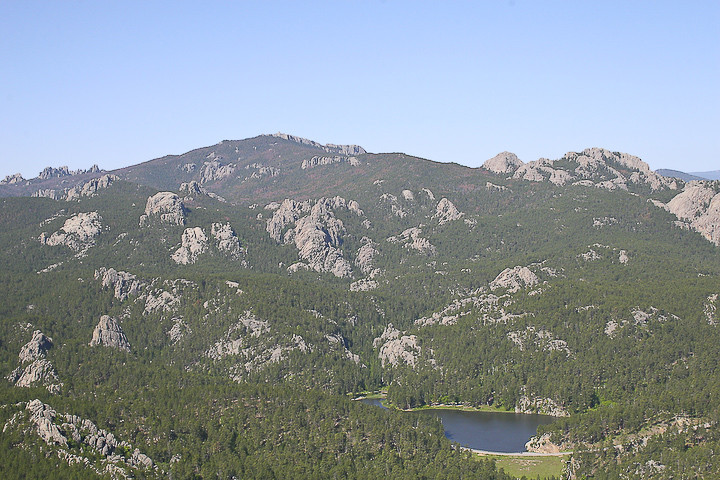 , resulting in the
, resulting in the  , which led to Red Cloud's War and later the Great Sioux War of 1876–77.
, which led to Red Cloud's War and later the Great Sioux War of 1876–77. to the Nez Perces
to the Nez Perces 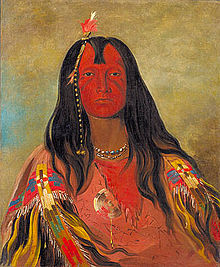 Idaho-—fought Americans at one time or another. But the Sioux of the Northern Plains and the Apache of the Southwest provided the most celebrated opposition to encroachment on tribal lands. Led by resolute, militant leaders, such as Red Cloud and Crazy Horse, the Sioux were skilled at high-speed mounted warfare. The Sioux were relatively new arrivals on the Plains, as, previously, they had been sedentary farmers in the Great Lakes region. Once they learned to capture and ride horses, they moved west, displacing other Indian tribes and became feared warriors. Historically the Apache bands supplemented their economy by raiding others and practiced warfare to avenge a death of a kinsman. The Apache bands were adept at fighting and highly elusive in the environments of desert and canyons.
Idaho-—fought Americans at one time or another. But the Sioux of the Northern Plains and the Apache of the Southwest provided the most celebrated opposition to encroachment on tribal lands. Led by resolute, militant leaders, such as Red Cloud and Crazy Horse, the Sioux were skilled at high-speed mounted warfare. The Sioux were relatively new arrivals on the Plains, as, previously, they had been sedentary farmers in the Great Lakes region. Once they learned to capture and ride horses, they moved west, displacing other Indian tribes and became feared warriors. Historically the Apache bands supplemented their economy by raiding others and practiced warfare to avenge a death of a kinsman. The Apache bands were adept at fighting and highly elusive in the environments of desert and canyons.






 raf cardington
raf cardington